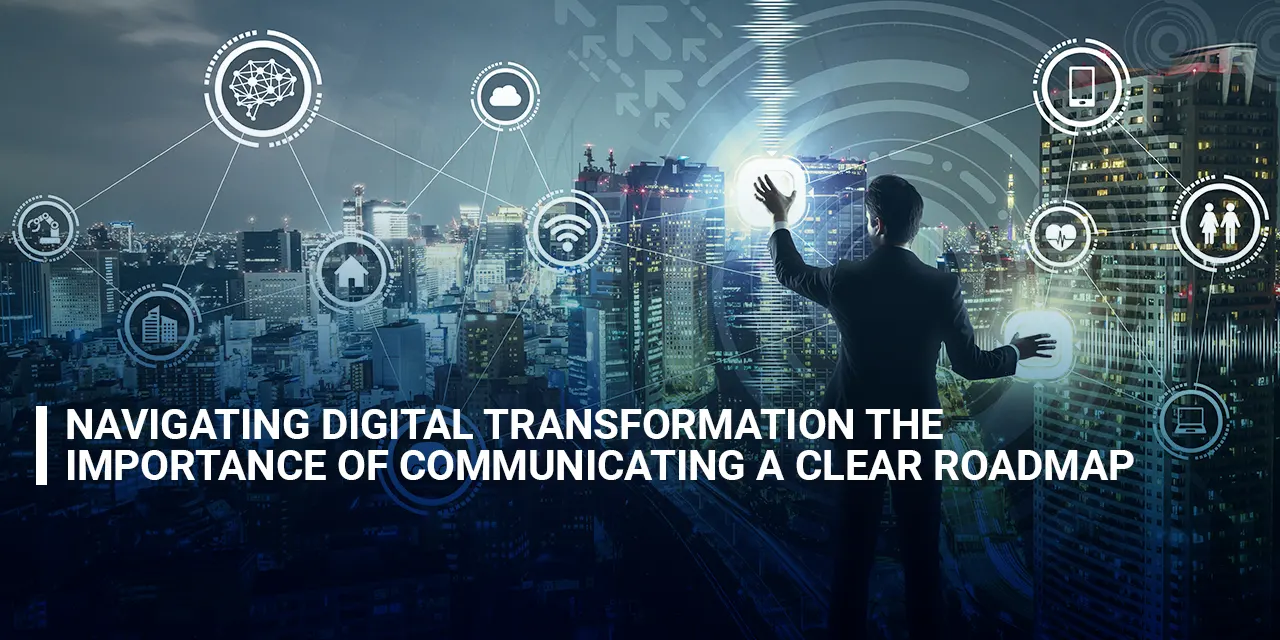Research
Share Knowledge
Brainstorm Ideas
The Digital Transformation Imperative
Digital transformation represents a comprehensive shift in how organizations operate, engage with customers, and leverage technology to create value. It encompasses a wide range of technologies, including automation, artificial intelligence, data analytics, and cloud computing, which have the potential to revolutionize businesses.
The benefits of digital transformation are compelling, including increased productivity, cost savings, and improved customer experiences. However, the journey can be fraught with challenges, and a lack of a well-defined roadmap can lead to confusion, inefficiency, and missed opportunities.
The Journey vs. the Roadmap
Often, organizations emphasize that digital transformation is a journey rather than a destination. While this is a valid perspective, it's equally important to recognize that a journey requires a roadmap. A roadmap is a structured plan that outlines the steps, milestones, and goals along the way. Without a clear roadmap, the journey can become disorganized and aimless.
Here's why declaring digital transformation a journey without communicating a roadmap can lead to various issues:
1. Lack of Clarity
Without a roadmap, employees and stakeholders may be unclear about the objectives, timelines, and expected outcomes of the digital transformation journey. This lack of clarity can result in confusion and resistance to change.
2. Inefficient Resource Allocation
A roadmap helps in allocating resources, including budget, time, and talent, in an efficient and targeted manner. Without it, resources may be spread thin or misallocated, leading to wasted efforts and budget overruns.
3. Missed Milestones
Digital transformation often involves numerous milestones, from system upgrades to process improvements. A roadmap ensures that these milestones are well-defined and can be tracked, reducing the risk of missing crucial targets.
4. Alignment with Business Goals
Digital transformation should be closely aligned with an organization's overarching business goals. Without a roadmap, it can be challenging to ensure that transformation efforts are contributing to the achievement of these goals.
5. Risk Management
A roadmap provides an opportunity to assess potential risks and develop mitigation strategies. Without it, organizations may be ill-prepared to handle unexpected challenges that may arise during the journey.
The Role of Communication
In addition to creating a clear roadmap, effective communication is vital. Organizations must ensure that the roadmap is well-communicated to all relevant stakeholders, including employees, customers, partners, and investors. Here's how communication plays a critical role:
1. Employee Engagement
Engaging employees in the digital transformation journey is essential. Communication ensures that employees understand the objectives and their role in the process, fostering a sense of ownership and commitment.
2. Stakeholder Buy-In
External stakeholders, such as customers and partners, need to be informed about the digital transformation journey and its potential impact on their interactions with the organization. Clear communication can help gain their buy-in and support.
3. Transparency
Transparent communication about the roadmap builds trust within the organization. It reassures stakeholders that leadership is committed to the transformation and is willing to share progress, challenges, and successes.
4. Flexibility and Adaptability
In the rapidly changing business environment, adaptability is crucial. Effective communication ensures that all stakeholders are informed about adjustments to the roadmap when necessary, helping them adapt to evolving circumstances.
5. Accountability
Clear communication establishes accountability for the digital transformation journey. Stakeholders can be held responsible for their roles and contributions, fostering a sense of responsibility and commitment.
How Can We Help?
ITPN has leading-edge capabilities, top-class experts, and pioneering experience in this area. Please contact us if you have any questions or need assistance regarding our services.
Conclusion
Digital transformation is undoubtedly a journey, but it's a journey that demands a well-defined roadmap and effective communication. Organizations that declare digital transformation as a journey without clearly communicating a roadmap can encounter challenges ranging from lack of clarity and inefficient resource allocation to missed milestones and a misalignment with business goals.
Effective digital transformation requires not only the creation of a roadmap but also its clear and consistent communication to all relevant stakeholders. This communication ensures that everyone involved understands the objectives, the roles they play, and the expected outcomes. It builds trust, fosters engagement, and helps organizations adapt to the dynamic and ever-changing landscape of digital transformation. In the end, the journey becomes more purposeful and the destination more achievable with a roadmap that is shared and understood by all.

